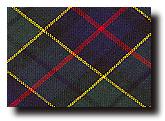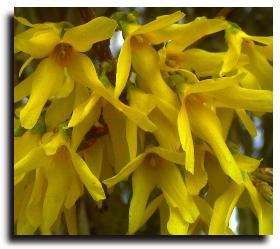 This ancient Scottish name may have been derived from a Gaelic first name "Fearsithe" which means "man (or place) of peace". But there is also a legend that it originated from "Forsach" a Norseman who settled in Aquitaine in France and thence as the Viscomte de Fronsoc to the English court and lands in Northumberland and then into the Borders of Scotland and Edinburgh. In current usage, the name "Forsyth" in Scotland has the stress on the second syllable.
This ancient Scottish name may have been derived from a Gaelic first name "Fearsithe" which means "man (or place) of peace". But there is also a legend that it originated from "Forsach" a Norseman who settled in Aquitaine in France and thence as the Viscomte de Fronsoc to the English court and lands in Northumberland and then into the Borders of Scotland and Edinburgh. In current usage, the name "Forsyth" in Scotland has the stress on the second syllable.
Osbert, son of Robert de Forsyth was granted land in Sauchie from King Robert the Bruce on 1306 and after giving a good account of himself at the Battle of Bannockburn in 1314, he received confirmation of his land-holding under the royal seal. Osbert's son became the king's "macer" and constable of Stirling Castle in 1368 and the family became established in the town and held many civic posts over the generations.
David Forsyth, who lived in Lanarkshire, obtained lands there before 1488 and claimed that his ancestors were the Norman de Fronsoc and had heraldry similar to de Fronsoc. Forsyth castle near Dykes in Lanarkshire survived to the early 19th century. Other branches of the family settled Monkland at Inchnoch castle and spread to Ayrshire as well as around Glasgow.
A William Forsyth was a baillie in Edinburgh around 1365. His son moved to St Andrews and acquired the barony of Nydie. The fourth baron perished at the Battle of Flodden in 1513 but his grandson married a great-granddaughter of James III. He acquired lands around Falkland Palace and became king's macer and Puirsavant at the palace. The present chief of the Forsyths is descended from this line.
There was also a branch of the Forsyths at Monymusk in Aberdeenshire. In the 18th century, the Reverend Alexander Forsyth from Aberdeenshire invented the percussion cap which replaced the flint lock. He turned down an offer of 20,000 pounds from Napoleon for the secret. The invention was adopted by the British army without his knowledge and the government tardily allocated him a modest pension; the first (and last) installment was received on the day of his death.
 William Forsyth from Old Meldrum became a distinguished horticulturist and was appointed Chief Superintendent of the Royal Gardens at Kensington and St James' Palace in 1784. In 1802 he published a "Treatise on the Culture and Management of Fruit Trees" which became a best-seller in its day. He is best remembered now for the family of plants known as "Forsythia".
William Forsyth from Old Meldrum became a distinguished horticulturist and was appointed Chief Superintendent of the Royal Gardens at Kensington and St James' Palace in 1784. In 1802 he published a "Treatise on the Culture and Management of Fruit Trees" which became a best-seller in its day. He is best remembered now for the family of plants known as "Forsythia".
The current chief restored Ethie Castle near Arbroath, but this has now been sold.
The Forsyth clan motto is "Instaurator ruinae" which means "A repairer of ruin".
There are Forsyth clan Web sites here and here.



